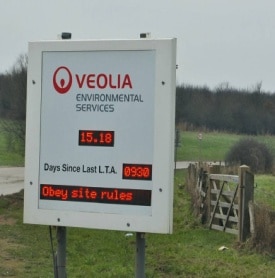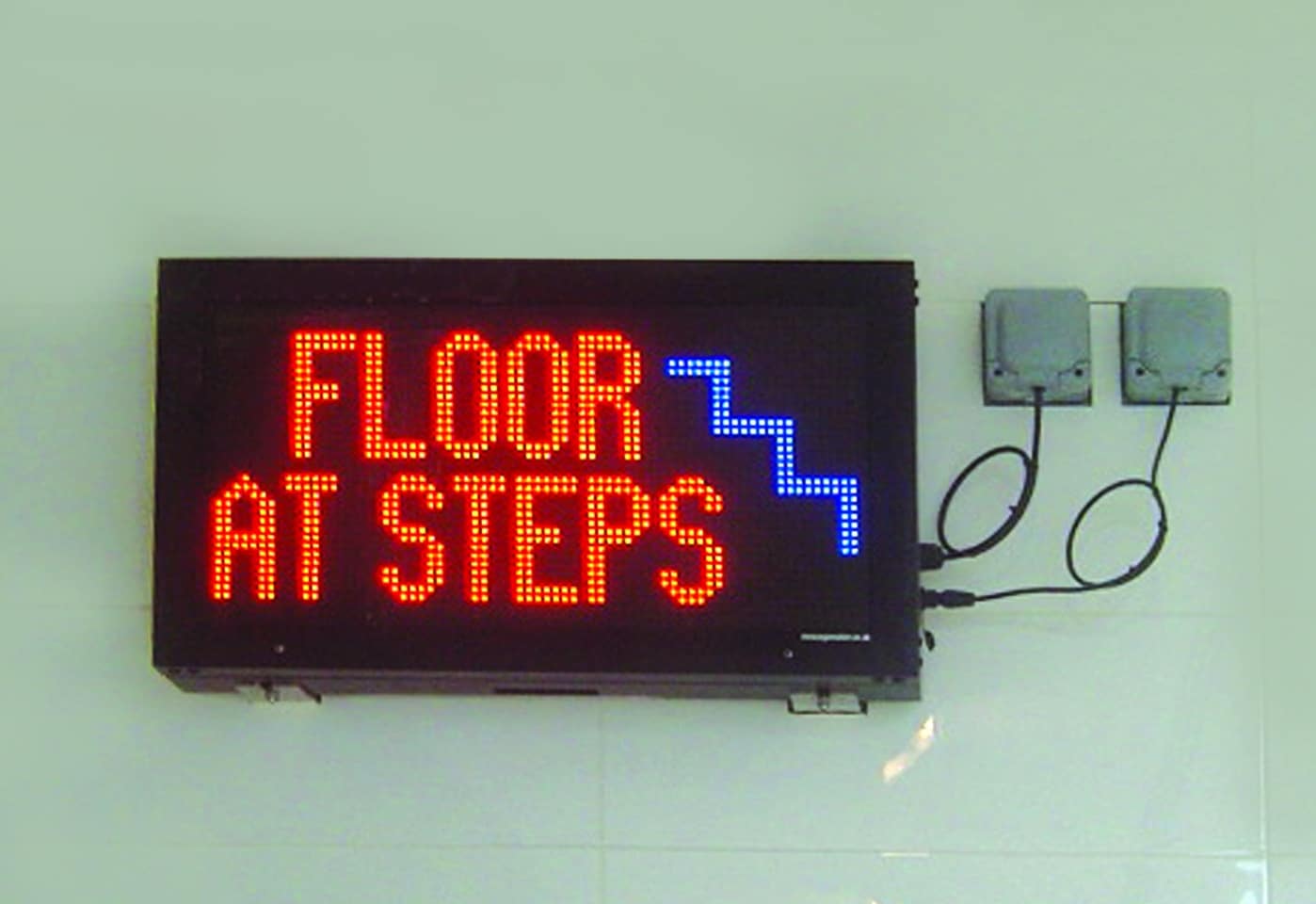Lane-use Control Signals Explained
19th July 2022
Lane controls signs are an effective tool in traffic management, both on public highways and for private usage. Using simple and effective communication, these signs control traffic flow through the use of opening and closing lanes to enhance safety and efficiency on our roads.
Road users will recognise the signs from the increasing amount of smart motorways, but their uses go far beyond that. For everything you need to know about lane control signs, we have created the following guide.
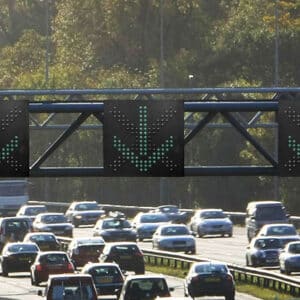
What are Lane-Use Control Signs?
Lane-use control signs comprise of LEDs arranged in specific patterns, which illuminate in different colours and symbols according the given circumstances. If a lane is open, a green arrow will illuminate, and if a lane is closed, a red cross will illuminate and some variations include a white arrow to indicate a lane change.
These signs are typically situated overhead of vehicles to indicate the specific use of the lane or entrance. The standout design of an LED lane control sign has proven an effective tool in the improvement of both road safety and traffic efficiency.
Where are Lane-Use Control Signs Used?
Lane control signs have application on both public highways and for private use.
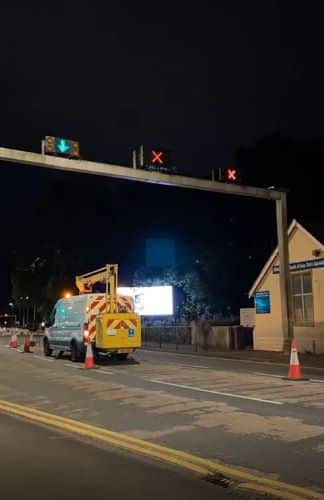
Public Highways and the Stategic Road Network
From Smart Motorways to Tidal Flow systems, lane-use control signs have many different applications. They are commonly used on smart motorways to indicate whether the lane is open or closed due to various reasons such as a traffic collision, roadworks, a breakdown, or other similar scenarios.
These signs are also being used on highways where lanes are reversed depending on traffic volume. This is known as a ‘Tidal flow’ system, where lane directions are changed to improve traffic flow.
Other application on the public highway includes tunnels, toll booths, or large parking garages, to indicate whether or not an approaching motorist may enter the lane.
Private Applications
Large car parks, garages, depots, ports and quarries are a few examples of where lane-use control signs are used to indicate whether or not an approaching motorist may enter the lane or entrance. This can include navigating heavy goods vehicles to loading bays, motorists through ferry ports or directing cars to open garages.
What are Lane-Use Control Signs used for?
The primary functions of lane control signs are to enhance both road safety and road efficiency.
Motorways
As previously mentioned, lanes can be subject to closures following traffic collisions and breakdowns so with the use of lane control signs, these lane can be better communicated to motorists to closures allow for a safer journey for vehicles passing the incident.
Smart motorways rely on integrations between the LED signs and other technologies to ensure lane closures are correctly managed, it also relies on motorists understanding how to use it. In the UK, the rollout is currently “paused until 5 years’ worth of safety data is available” (Gov.uk) whilst the existing smart motorways are “further upgraded with best-in-class technology and resources” to ensure the safety of motorists and road workers.
Furthermore, a lane closure following a traffic collision, roadworks, a breakdown, or other similar scenarios, will minimise any disruption that may have been caused, thus maintaining a steady flow of traffic, minimising air pollution, and most importantly avoiding further collisions.
Tidal Flow
Another example of lane control signs enhancing road efficiency is the aforementioned ‘Tidal flow’ system. This system is being used more commonly across the UK now to make use of the available lanes in a more efficient way. Through the use of lane control signs, a Tidal flow system allows the middle lane to alternate between north and southbound (or east and west), whilst the direction of the outer lanes remain consistent. This system is highly effective on roads leading into urban areas where commuters will be heading into the city in the morning and leaving in the evening. The Tidal flow allows maximum road usage during peak hours of the morning and evening.
Private Applications
As mentioned previously there are a variety of applications where lane-use control signs would benefit. Large hazardous areas such as ferry ports and depots have busy on-site traffic, loading bays to get to and a mix of pedestrians and heavy good vehicles, so clearly indicating open and closed routes, bays and entrances will help control traffic flow. Other signs, printed and LED, can complement lane-use control signs by providing clear direction around a site, be used as warning signs for potential hazards or minimise speeding.
Meanings of Different Lane-Use Control Signals
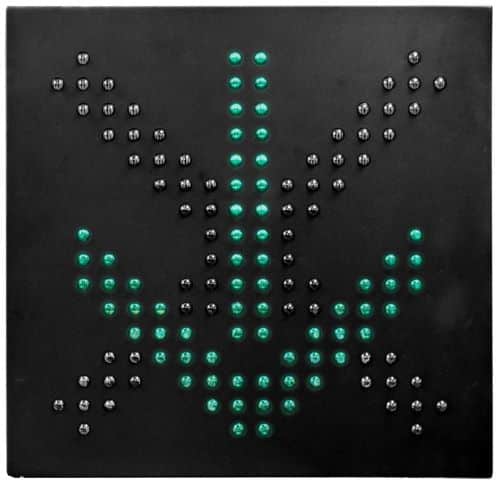
Downward Green Arrow
The downward green arrow indicates that the lane below is open and traffic is free to flow through. From the opposite direction of the green arrow, a red cross will usually be displayed.
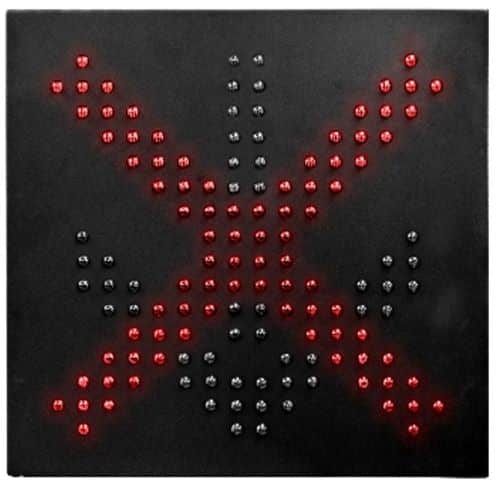
Red X
The red X indicates that the lane is closed. No road user may enter the lane. This lane may have approaching traffic in the opposite direction.
Want to find out more? Check out our range below!
 BACK
BACK
